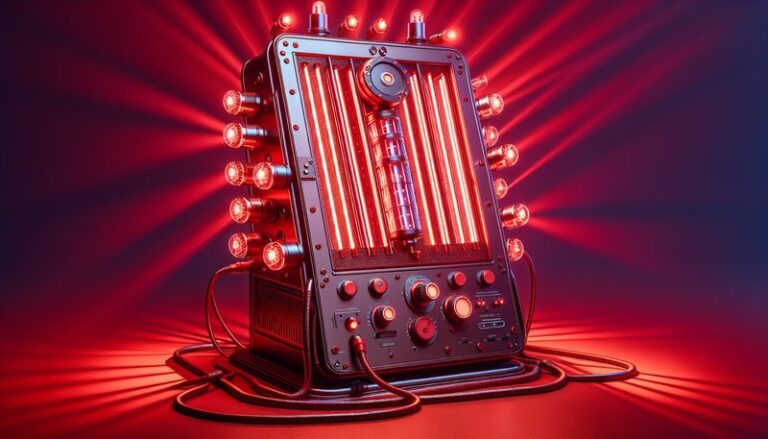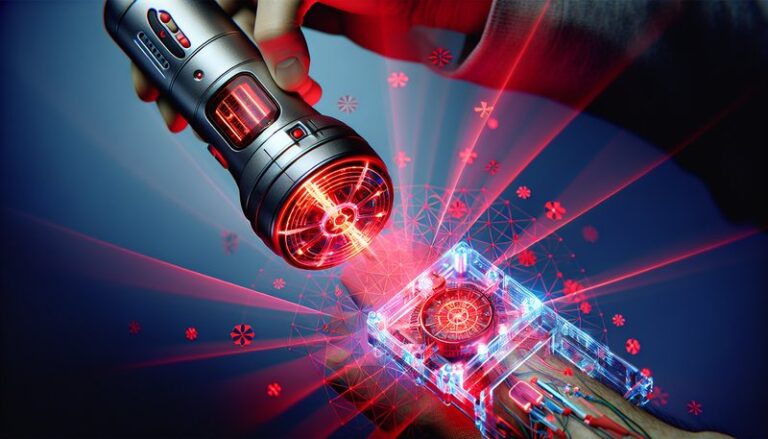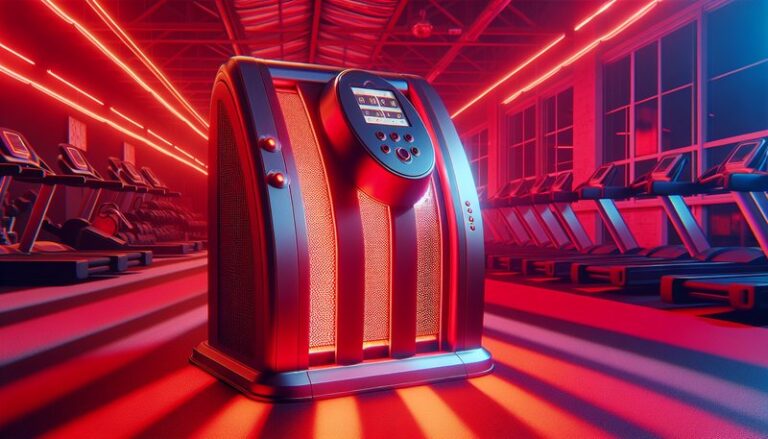Does Red Light Therapy Help You Lose Weight?
Is it possible for a simple light to support your weight loss efforts?
In recent years, red light therapy has surfaced as a popular wellness trend, promising a range of benefits, including weight loss. This article will explore what red light therapy is, its potential benefits for weight loss, the feasibility of using it as a weight loss tool, things to consider before starting treatment, alternatives to red light therapy, and answer frequently asked questions to shed more light on this intriguing topic.
Key Takeaways
- Red light therapy utilizes low-level wavelengths of light to promote healing and cellular function.
- Initial studies suggest it may aid in fat loss by improving metabolic processes.
- While red light therapy shows promise, it should complement a balanced diet and exercise routine rather than serve as a standalone solution.
What is Red Light Therapy?
Red light therapy, also known as low-level laser therapy (LLLT) or photobiomodulation, is a non-invasive treatment that uses specific wavelengths of light, typically red and near-infrared, to stimulate healing and cellular activity. This therapy is often administered through LED panels or lasers and is touted for its ability to penetrate the skin, affecting tissues below the surface.
The concept has gained traction within the health and wellness communities, expanding from dermatology and pain management to applications in weight loss and fitness. Studies suggest that red light therapy can enhance mitochondrial function, increase energy production in cells, and activate metabolic processes, all of which can play a role in weight management.
What are the Benefits of Red Light Therapy?
Exploring the advantages of red light therapy can provide insights into its potential role in weight loss.
Improved Metabolic Function
Research indicates that red light therapy may enhance the body’s metabolic function, facilitating fat burning and increasing energy levels. Improved metabolism can lead to greater caloric expenditure and potentially assist in weight loss efforts.
Cellulite Reduction
Some studies have shown that red light therapy can reduce the appearance of cellulite by improving blood flow and lymphatic drainage in affected areas. This can lead to smoother skin texture and heightened confidence in body image.
Enhanced Recovery and Muscle Performance
Athletes and fitness enthusiasts may benefit from red light therapy’s ability to accelerate muscle recovery after exercise. Faster recovery means more consistent workouts, which can support weight loss goals over time.
Supports Emotional Well-being
In addition to physical benefits, red light therapy may enhance mood and decrease stress levels, contributing to healthier lifestyle choices. A positive mindset can make maintaining a balanced diet and regular exercise routine easier.
Non-Invasive and Painless Procedure
As a non-invasive treatment with minimal side effects, red light therapy presents an appealing option for those looking to enhance their weight loss strategies without undergoing surgery or pharmacological interventions.
Is it Possible to Lose Weight with Red Light Therapy?
While promising, it’s important to evaluate whether red light therapy can significantly contribute to weight loss. Research supports the idea that while red light can improve metabolic activity, sustainable weight loss primarily relies on a balanced diet and regular physical activity.
What are the Advantages of Using Red Light Therapy for Weight Loss?
Engaging in red light therapy can provide several unique advantages:
Convenience and Accessibility
Sessions can usually be conducted in salon or clinic settings or at home with various devices, allowing for flexibility in treatment.
Minimal Time Commitment
Most sessions last between 10 and 30 minutes, making it easier to incorporate into a busy lifestyle while maintaining an existing workout routine.
Learn the full details in Depth of Red Light Therapy?
No Dietary Restrictions Required
Unlike some weight loss methods that impose strict nutritional guidelines, red light therapy can be used alongside personal diets without requiring strict changes.
What are the Disadvantages of Using Red Light Therapy for Weight Loss?
Despite its benefits, there are challenges to consider:
Lack of Extensive Long-Term Research
Many studies on red light therapy are preliminary, and more extensive research is necessary to establish definitive weight loss efficacy.
Potential Cost
Professional treatments can be expensive, and the cost of at-home devices can vary. This may deter some individuals from committing to a consistent routine.
Varied Results
Not everyone experiences the same results with red light therapy; its effectiveness can depend on the individual’s body type, lifestyle, and underlying health conditions.
What are the Things to Consider Before Starting Red Light Therapy?
Before embracing red light therapy as a weight loss strategy, it’s vital to consider key factors.
Consult a Healthcare Provider
It’s advisable to consult with a healthcare professional to ensure that red light therapy aligns with your individual health needs and weight loss goals.
Set Realistic Expectations
Understanding that red light therapy should complement, not replace, regular exercise and a nutritious diet will help establish a balanced approach to weight management.
Regular Use is Crucial
For noticeable results, consistency is vital; sporadic treatments may not yield significant changes in body composition.
Skin Sensitivity
Individuals with skin conditions or heightened sensitivity should investigate potential reactions before starting treatment.
What are the Alternatives to Red Light Therapy for Weight Loss?
There are several other approaches to weight loss that can effectively support your journey.
Diet and Nutrition
Focusing on a balanced diet rich in whole foods, lean proteins, and vegetables is foundational for effective weight loss. Nutrition plays a critical role.
Regular Exercise
Incorporating aerobic activities, strength training, and flexibility exercises into your routine enhances calorie burn and builds muscle, contributing to weight management.
Behavioral Therapy
Engaging in psychological supports, such as counseling or support groups, can address underlying issues related to eating habits and emotional well-being.
Read all about it Is Red Light Therapy Legit?
Weight Loss Supplements
Some may consider herbal supplements or meal replacement products, though it is crucial to approach these with caution and preferably under the guidance of a healthcare professional.
Conclusion: Is it Recommended to Use Red Light Therapy for Weight Loss?
Red light therapy shows promise as a supplementary tool for weight loss, particularly in enhancing metabolic functions and promoting recovery. However, it should not be viewed as a standalone solution. A holistic approach that combines consistent exercise, a balanced diet, and healthy lifestyle changes is essential for effective and sustainable weight loss.
Frequently Asked Questions
Can red light therapy replace diet and exercise for weight loss?
No, red light therapy should complement a healthy diet and exercise routine; it is not a substitute.
How often should I undergo red light therapy for weight loss?
Most protocols suggest 3-5 sessions per week to see optimal benefits, but individual recommendations can vary.
Are there any side effects associated with red light therapy?
Red light therapy is generally considered safe, but some individuals may experience temporary redness or irritation at the treatment area.
What does a typical red light therapy session look like?
Sessions typically involve sitting or lying near a light source for 10-30 minutes, where the targeted areas are exposed to red light.
Are there specific devices recommended for home use?
When selecting at-home devices, look for those with FDA clearance or certification, as this ensures quality and safety in usage.





